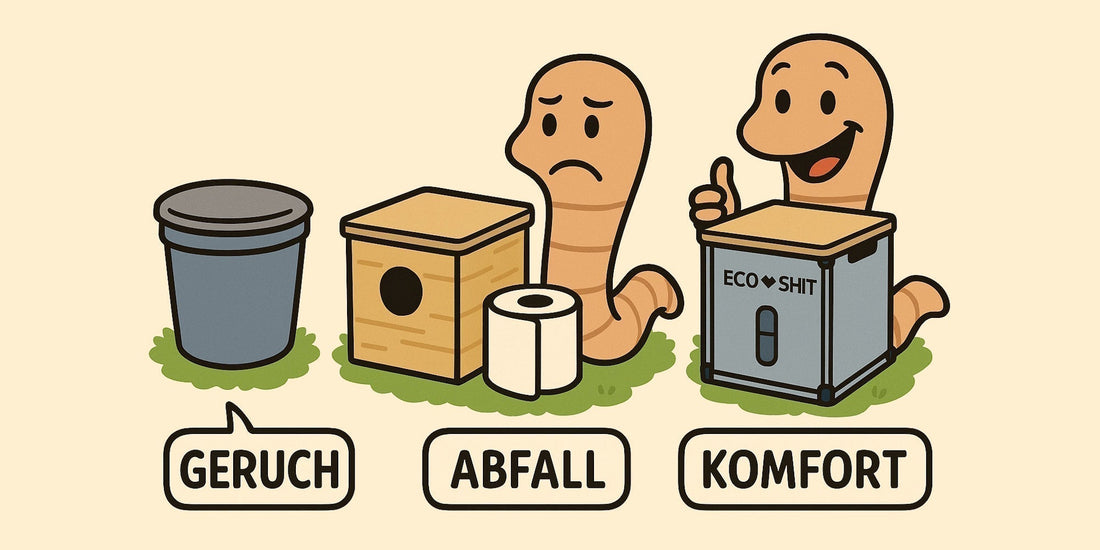
Dry toilet vs. composting toilet – what’s the difference?
Water, sewage, or flushing aren't available everywhere. This is where the dry toilet comes in.
But what is actually behind it – and why is the composting toilet considered its best and most modern version?
What is a dry toilet (TC)?
“TC” stands for toilette sèche – French for dry toilet .
Unlike a classic toilet (water closet), it works without water or sewer connection .
A dry toilet does not require flushing at all and collects the excretions in a container.
This also includes a simple bucket with a seat or the traditional outhouse.
However, these simple systems have some disadvantages:
- Urine and feces end up together in the bucket
- A strong smell quickly develops
- The waste volume is large (urine consists of around 90% water)
- Disposal is often time-consuming and unpleasant
The solution: The composting toilet as a smart dry toilet
The composting toilet is the advanced form of the dry toilet.
It separates liquid and solid components , which prevents odors and makes disposal much easier.
Advantages of the composting toilet over the pit toilet:
✅ Low odor – due to the separation of urine and feces
✅ Easy disposal – urine can be disposed of via the drain or in nature
✅ Less volume – because the solid part dries faster
✅ Nutrient recovery – urine can be diluted and used as liquid fertilizer
✅ Compostable – Feces and bedding can (depending on the setup) be added to the compost
Conclusion: The composting toilet is the new standard
Whether in the garden, tiny house, on the construction site or while camping – wherever a traditional toilet does not work, the composting toilet is the better solution.
It is cleaner, more sustainable and more comfortable than the outhouse – with less smell, less waste and more control over your own circulation.
